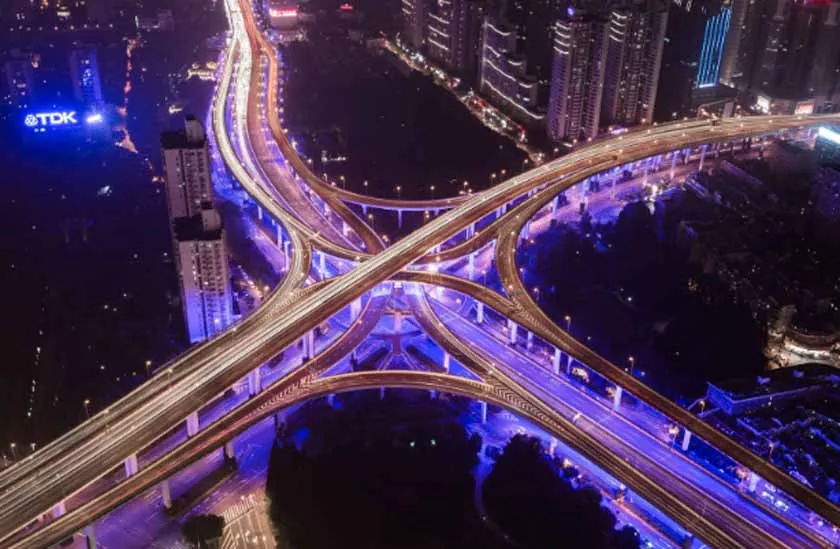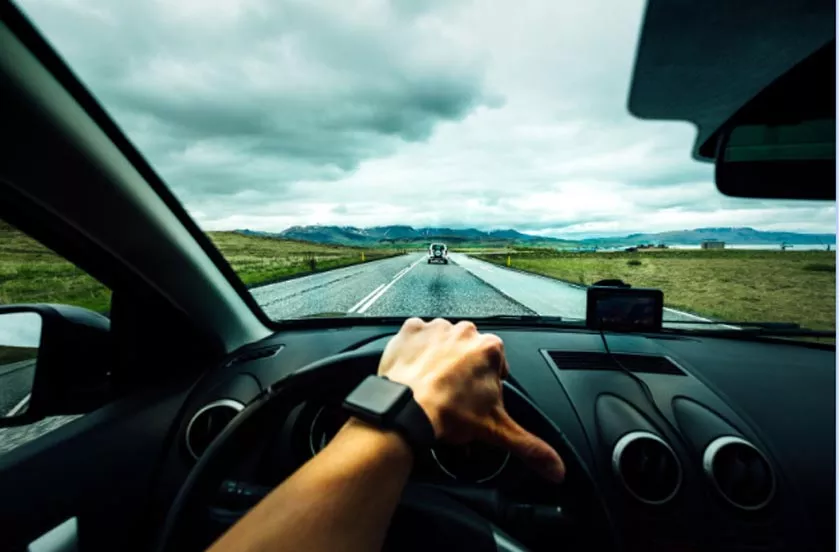Remember the last time you were stuck in a traffic jam and wished you could find a magic button to clear the road? It’s not impossible. Forget the essay pro reviews you read to kill traffic time. Let’s delve into the groundbreaking technologies that make our roads brighter and our journeys smoother.

Smart Roads, Smarter Journeys: How Technology Is Changing Highway Systems
The Internet of Things and Smart Roads
The Internet of Things is changing the game in highway technology. Here’s what it involves:
- Sensors. Imagine embedded sensors in the road that can detect the weight of vehicles and adjust traffic signals accordingly. This helps heavy trucks move more efficiently.
- Smart Signals. Sensors can also detect how many cars are waiting at a red light and adjust the timing. So, if you’re the only car at a signal late at night, you won’t have to wait forever!
- Weather Prediction. IoT can be a lifesaver in adverse weather conditions. Sensors can detect changes in temperature and road conditions. The system sends alerts to drivers or adjusts speed limits in real-time.
- Emergency Response. In case of an accident, IoT can instantly inform emergency services. Thus, people can assess the situation before they even arrive.
Automated Traffic Control
If you thought self-driving cars were cool, wait until you hear about automated traffic control systems. Here are some features that are making headlines:
- Adaptive Traffic Signals. These signals use AI algorithms to monitor traffic flow and adapt accordingly. They can prioritize emergency vehicles, ensuring they reach their destination faster.
- Automated Toll Booths. Gone are the days of waiting in long queues at toll booths. Automated systems can scan your vehicle and deduct the toll electronically, letting you pass without stopping.
- Real-Time Traffic Updates. Automated systems send information about traffic jams, road closures, and alternative routes directly to your car’s navigation system.
Electric Roads and Sustainable Energy
The race to sustainable energy is also making its way to our highways. Here’s a peek into the innovations that are driving this change:
- Solar Roadways. Solar panels built into the road can generate electricity. This energy can be used for street lights, traffic signals, and powering nearby communities.
- Wind Turbines. Some roads have small wind turbines that capture wind generated by passing vehicles.
- Charging Lanes. Imagine if your electric car could charge while you drive! Some highways are experimenting with embedded charging systems that can wirelessly charge your vehicle as you go.
Graphic User Interface for Advanced Driving
We all know about GPS, but the future promises even more advanced Graphic User Interfaces (GUIs) for your vehicle. Here are some advancements to look forward to:
- Heads-Up Display. With all the important information on the windshield, you never have to take your eyes off the road.
- Voice Control. Tired of tapping on your GPS? Advanced voice control systems are expected to manage everything, from navigation to controlling in-car entertainment.
- Augmented Reality. Imagine your windshield displaying arrows to show you exactly where to turn or highlighting potential hazards on the road.

Tips for Navigating Smart Roads
Navigating the smart roads of the future might sound like a breeze, but as with any technology, there’s a learning curve.
Here are some tips that can make your transition to these high-tech highways smoother:
Stay Updated
Software updates are more important than you might think. These aren’t just for fixing bugs; they often add or improve new features.
Outdated software can result in missed real-time alerts, suboptimal route suggestions, or even compatibility issues with newer roadway technologies. So, make it a habit to check for updates on your car’s navigation system and any driving-related apps you use.
Learn Features
High-tech cars and roads have many features—lane assistance, adaptive cruise control, heads-up display, and more. It can be overwhelming initially, but invest some time learning what these features do and how to use them effectively.
Consult your car’s manual or watch tutorial videos to understand how to maximize these features for a safer, more efficient ride.
Follow the Rules
This is a non-negotiable principle. Speed limits, for example, might be adjusted in real-time based on road conditions, but you still must respect them.
Traffic signs and signals may become more intuitive, but ignoring them could lead to severe consequences.
Set Emergency Contacts
Modern cars often come with an SOS feature that can send an emergency signal with the touch of a button. This is integrated into the car’s telematics system and can alert emergency services to your location should you be in an accident.
Ensure that this system is set up correctly, including any contacts that should be alerted in the case of an emergency. This is one feature you don’t want to realize is improperly configured when you need it.
Tweak Privacy Settings
With all these interconnected systems, data privacy becomes a concern. Your car and the road will likely exchange various bits of data. Ensure you know what data is being shared and with whom. Check your car’s settings to manage permissions.
Participate in Feedback Loops
Some innovative road technologies are in pilot phases, so the companies developing them need user feedback. Take the time to share your experiences, both good and bad.
Stay Alert
Although advanced features can make driving more comfortable, they can also lull you into a false sense of security. Remember that no technology is foolproof.
Always keep your hands on the wheel and your eyes on the road. Human intuition and reflexes are still irreplaceable in many driving situations.
Final Thoughts
The roads we drive on are no longer just concrete slabs; they’re evolving into complex systems integrated with cutting-edge technology. From IoT to AI and sustainable energy, these innovations promise safer, more efficient, and greener travel options.
The future of highway systems indeed looks promising. So, the next time you hit the road, you won’t just be going from point A to point B; you’ll be journeying into the future. Safe travels!
